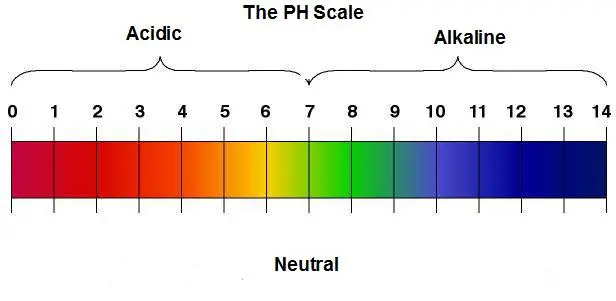In the realm of beloved beverages, tea, and coffee have captivated the taste buds of millions worldwide. While both offer unique flavors and potential health benefits, one question often arises: “Is tea less acidic than coffee?“
This query holds significance for those who prefer a milder drink or have concerns about acidity and its effects on the body.
In this article, I’ll delve deep into the acidity levels of various tea varieties and coffee preparations, exploring the factors that influence their pH values.
By the end, you’ll have a comprehensive understanding to make an informed choice that suits your preferences and needs.
Is Tea Less Acidic Than Coffee?
Yes, tea is generally less acidic than coffee. Most tea varieties fall within a mildly acidic or neutral pH range, while coffee tends to be more acidic overall.
Understanding Acidity and the pH Scale
Before we compare the acidity levels of tea and coffee, let’s first grasp the concept of acidity and the pH scale. The pH scale measures the acidity or basicity of a substance, ranging from 0 to 14.

A pH value of 7 is considered neutral, while anything below 7 is acidic, and above 7 is alkaline or basic. The lower the pH value, the higher the acidity level.
Tea: A Mildly Acidic Delight
When it comes to tea, most varieties are considered mildly acidic. However, the acidity levels can vary depending on several factors, including the type of tea, brewing method, and any additives used.
Black Tea: A Favorite with Moderate Acidity
One of the most popular tea varieties, black tea, typically has a pH range of 4.9 to 5.5. This moderate acidity level is responsible for its slightly tangy and robust flavor.

While black tea is more acidic than most other tea varieties, it still falls within a safe range for most individuals.
Green Tea: A Refreshingly Mild Option
Green tea, renowned for its numerous health benefits, has a pH range of 7 to 10, making it less acidic than black tea.

Some green tea varieties can even be slightly alkaline, contributing to their smooth and refreshing taste.
Herbal Teas: A Diverse Range of Acidity
Herbal teas, such as chamomile, mint, and fennel, generally have a pH range of 6 to 7, making them mildly acidic or close to neutral.

However, some herbal teas like lemon tea can be more acidic, with a pH around 3, due to the presence of citric acid.
Fruit Teas: Surprisingly Acidic Delights
While fruit teas may taste sweet and refreshing, they can be surprisingly acidic. For instance, rosehip and blackberry teas have a pH range of 2 to 3, making them quite acidic.

This acidity often stems from the natural acids present in the fruits used to create these teas.
Is Chai Tea Better Than Coffee?
Coffee: A More Acidic Beverage
In comparison to tea, coffee tends to be more acidic overall. One study found that coffee had an average pH of 5.35, while black tea had a pH of 6.37.
However, it’s essential to note that the acidity level of coffee can vary based on factors such as the bean variety, roasting method, and brewing technique.

Cold Brew Coffee: A Gentler Alternative
If you’re concerned about the acidity in coffee, cold brew coffee may be a better option. This brewing method often results in a less acidic beverage compared to traditional hot-brewed coffee.
The lower acidity can be attributed to the extended steeping process and the absence of heat, which can contribute to increased acidity.
Why Does Tea Make Me Nauseous?
Effects of Acidity on Health
When it comes to the effects of acidity on health, both tea and coffee are generally considered safe for most individuals.
However, those with specific conditions or sensitivities may need to be more mindful of their intake.
Teeth and Dental Health
While the acidity in tea and coffee can potentially contribute to enamel erosion and tooth discoloration, the risk is relatively low when consumed in moderation.

The “safe” pH level for drinks that won’t harm teeth is typically around 5.5. Most teas fall within or close to this range, making them a relatively tooth-friendly choice.
Can I Drink Tea After Brushing Teeth?
Digestive Health and Acid Reflux
For individuals with acid reflux or sensitive stomachs, the acidity in tea and coffee can sometimes exacerbate symptoms.
In such cases, opting for herbal teas like chamomile or reducing coffee consumption may be advisable.
Additionally, adding milk to tea can help neutralize some of the acidity, making it easier on the digestive system.
Balancing Acidity with a Healthy Diet
While the acidity levels of tea and coffee can be a consideration, it’s essential to approach their consumption in the context of a balanced diet.
Moderation is key, and incorporating a variety of nutrient-rich foods and beverages can help mitigate any potential negative effects of acidity.
Conclusion
In conclusion, tea is generally less acidic than coffee, with most varieties falling within a mildly acidic or neutral pH range. However, the acidity levels can vary significantly among different tea varieties and coffee preparations.
When it comes to making a choice, consider your personal preferences, health concerns, and overall dietary habits. Whether you prefer the soothing warmth of tea or the invigorating aroma of coffee, both beverages can be enjoyed in moderation as part of a balanced lifestyle.
